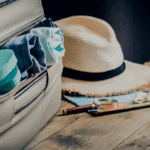Dear reader: This article contains links to products and services that I may be compensated for, at no extra cost to you.
If you haven’t already read it, please first see this article on why I think the Olympus OM-D EM-5 is the best mirrorless camera for traveling.
If you’re a traveler like me, you’re really going to love this camera. But choosing the camera only gets you halfway there. Now you are faced with the difficult task of deciding which lens (or lenses!) to get for it.
Trust me on this: it’s difficult to choose ONLY ONE lens for this camera. Even for a traveler who wants to minimize space and weight in your pack, Olympus lenses are so tiny, light, and affordable that it’s really easy to justify getting several of them. I would even say that buying them is highly addictive.
Of course, as a frequent traveler, I wanted to buy the best Olympus lens for travel. I did a ton of research before buying any of my lenses, just like I do before buying all of my must-have items for travel.
In this article, I’m going to share my conclusions after all that research, plus several years of using these lenses on the road. I’ll also include some of my favorite photos I’ve taken with each of them to give you an idea of what they are capable of.
I hope this helps you decide which of these Olympus lenses will be best for you travelers out there!
Important Note: If you shoot with an Olympus mirrorless camera, you can also use micro four thirds lenses from other brands, such as Panasonic and Tamron.
However, I feel that some of the best micro four thirds lenses for travel are the Olympus ones, and I’m only discussing those below because they are the ones I personally use.
Table of Contents
Should I Get the Olympus OM-D EM-5 Kit Lens?

No matter whether you get the Olympus OM-D EM-5 Mark II (the camera I have), or its newer version, the Olympus OM-D EM-5 Mark III (I’d recommend this one since it only costs a little more), you’ll have to make an important decision between two options when you buy it.
Your first choice is to get the camera body only, and then choose your own lenses. The Mark II comes in a black body or a more vintage-looking silver body (I love the look of mine). In the same way, the Mark III comes in a black body or silver body. Doing this allows you to pick exactly the lens or lenses you want to go with your camera.
Your second choice is to go with the kit, which is one of the options on all of the Amazon pages for the Olympus camera bodies. Both the Mark 2 and Mark 3 kits come with the Olympus 14-150 mm f4-5.6 lens (pictured above). Depending on the price of the body and individual lens at the time of purchase (the prices are always changing), getting the kit may save you some money, but not always.
So for travelers, should you get the kit or not? Personally, I didn’t. I wanted to get better lenses than the kit lens. However, for many travelers, you may find some advantages to the kit lens, as I’ll explain below.
Update: If you’re willing to get the Mark II instead of the newer Mark III, this better kit comes a much better lens, the Olympus 12-40mm (see below).
Is the Olympus 14-150 mm the Best Olympus Lens for Travel?
To be honest, the Olympus 14-150mm (i.e. the kit lens) is a very tempting Olympus lens for travelers. Basically, what you get is everything from wide (14mm) to super zoomed in (150mm) in one lens. This is a significant range that, for the average traveler-photographer, is going to cover just about every photo you’ll want to take.
The major advantage of this is that you don’t really need to buy any other lenses. This walk-around lens can stay on all the time, and you’ll never miss a shot because you have to stop and change lenses. I must admit that I was extremely tempted by this when I was buying my Olympus camera.
However, the major downside of getting a lens with such a range is that you have to make some quality sacrifices. If you aren’t a very serious photographer, you may not even notice or care. But for photographers aiming for top quality photos, you may notice some chromatic aberration at either end of the zoom. In terms of aperture, this lens only ranges from f4.0 to 5.6. This means you may have some difficulty getting clear shots in low-light situations.
What’s more, the lens is made of plastic and doesn’t feel as strong as you might want it to. Finally, it doesn’t come with a lens hood. These are just some of the sacrifices you need to make to get a cheaper, wide to super-zoom lens.
For more technical information about this lens, here is a detailed Olympus 14-150mm lens review.
The Bottom Line
I think the Olympus 14-150mm, the “kit lens” that comes with the Olympus omd em5 Mark II and Mark III, might just be the best Olympic lens for travelers who want an all-in-one lens and who aren’t aspiring for technical perfection in every photo they take.
I personally know professional travel bloggers who only use this lens and swear by it. But if you want to take your travel photography to professional levels, it probably isn’t the one for you.
My Favorite Olympus Travel Lens: Olympus 12-40 mm f2.8 Pro

When I said no to the Olympus kit lens, it’s because I badly wanted to get the Olympus 12-40mm f2.8 Pro Lens instead. I absolutely love this Olympus lens, and 90% of my travel photography is shot using it. I read a million (give or take) reviews of this lens before I got it. Everyone raved about it, and now I know why.
This lens is around 1.6 times the price of the kit lens (as I write this), and it’s much more limited in its zoom range. But that’s a good thing–in terms of photo quality, the results are indisputably superior.
The images I can capture with this lens are insanely sharp and detailed, whether it’s fully zoomed in or out. The widest (12 mm) may not seem like a big difference from the kit lens (14 mm), but those two millimeters make a big difference for getting stunning wide landscape and architecture shots. Zoomed out, I find 40mm to be enough for most of my street photography, and that’s why I keep this lens on most of the time when I’m traveling.
Aperture-wise, this lens opens up to f2.8, which makes a world of difference compared to the kit lens (f4.0) for avoiding dreaded blurry images in low light conditions. Only once in a while, when it’s especially dark, do I trade this lens out for my f1.8 one (we’ll get to that below).
This lens has a little more weight to it, and I find it’s the perfect weight and size to balance out the camera itself, unlike some of the lighter lenses, which almost feel TOO light on the camera. Because it is made with metal, it feels stronger, and I’m never worried when I bump it into things.
The Olympus 12-40mm also comes with a button that you can customize for a variety of functions, a ring that you can push or pull to switch between manual and auto focus, and a lens hood for blocking out glare from the sun.
The only downside to this lens as a traveler is that is doesn’t zoom very far. So for my long-distance shots, I have to switch over to my zoom lens (see the next entry).
For more technical details about this lens, here’s a detailed Olympus 12-40mm Pro Lens review.
Photos Taken with My Olympus 12-40 mm Pro Lens
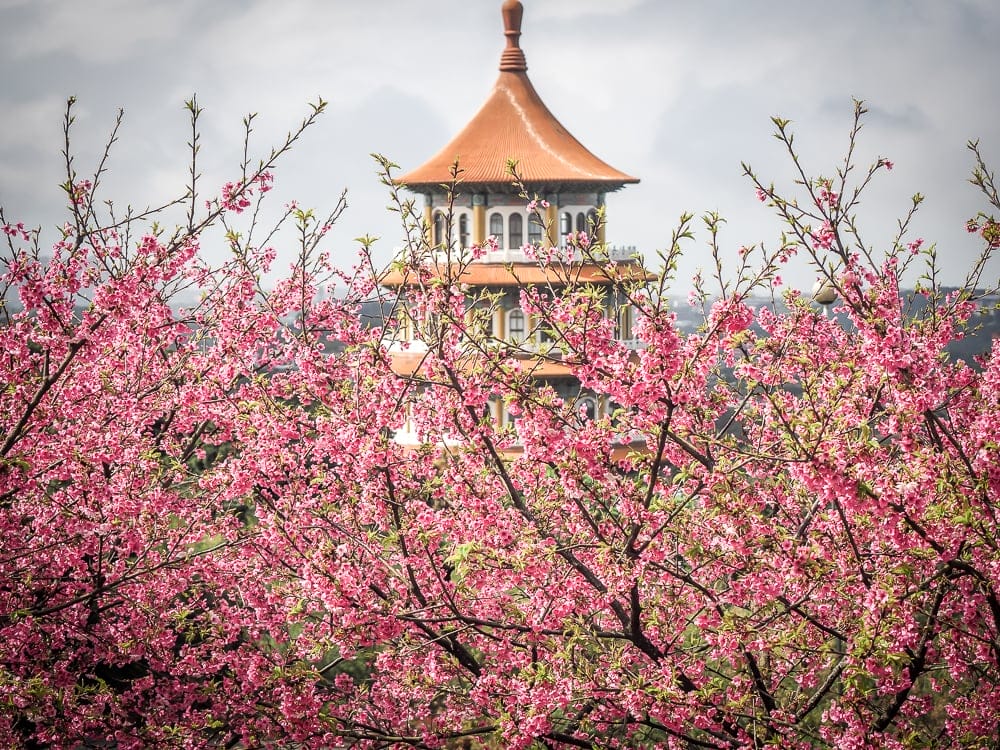



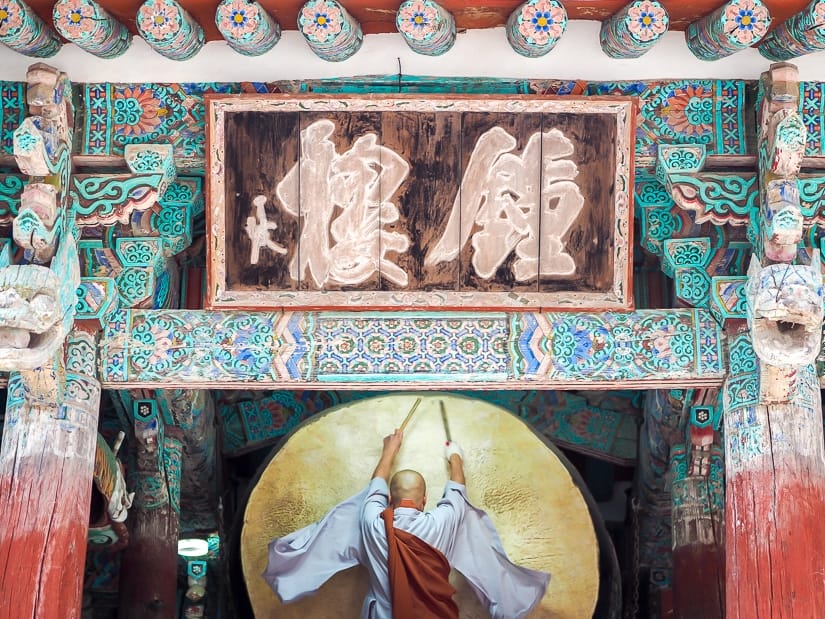
The Bottom Line
If you can afford it, buy the Olympus 12-40 mm pro lens instead of the kit lens. Now.
My Zoom Lens: Olympus 40-150 mm f4-5.6

Once in a while, my Olympus 12-40 mm pro lens just doesn’t have enough zoom to get a photo I want. That’s when I pull out my Olympus 40-150 mm lens. Whether it’s an animal in the distance, a person I’m trying to discreetly photograph from across the street, or the tip of a mosque’s dome, this lens always does the trick.
This lens is extremely affordable, so it was a no-brainer addition to my camera bag. It’s also small, thin and extremely light (only 190 grams!), so it’s never a burden to carry along. Don’t be fooled by the image above, which seems a little large. This lens is only as long as my middle finger.
For very serious photographers, this zoom lens may not cut it for you. With an aperture range of f4.0-5.6, you won’t always be able to get the sharpest shots at full zoom. However, to get the Pro version of this lens that can stop up to f2.8, you’ll need to drop nearly $1000 more, not to mention it’s quite a bit larger. I couldn’t justify that price, especially since I don’t use super zoom all that much in my travels.
Photos Taken with My Olympus 40-150 mm Lens

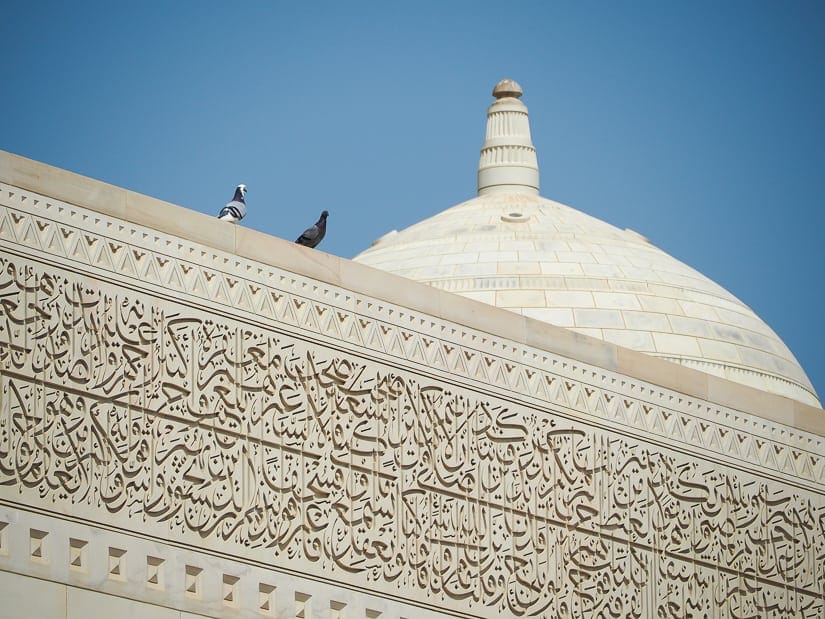

The Bottom Line
Having a long distance zoom lens comes in super handy sometimes when you are traveling. If you get the Olympus 12-40 mm Pro Lens like I did, then you’ll probably want to add the Olympus 40-150 mm lens to your kit as well.
You can consider getting the pro version of this zoom lens, but it’s quite a bit larger and more expensive. For me, the 40-150 mm f4-5.6 is good enough.
My Super Low-Light Lens: Olympus 45mm f1.8

The Olympus 45mm f1.8 is so small and cheap yet useful that it is hard to justify NOT buying it. This lens only weighs 116 grams and can fit in the palm of my hand.
The main benefit of this lens is being able to stop up to f1.8. This means the lens’ hole is super wide open, allowing more light to come in. So anytime I find myself in super dark conditions, I take this little savior out, and I’m still able to capture sharp images. It also makes it very easy to capture lovely bokeh, or blurred backgrounds. Finally, it’s really great for portrait photography.
This lens has a fixed length of 45 mm, so I find I sometimes have to stand fairly far back from my subject. This can be restrictive, but it can also be quite ideal for portraits and street photography. I find that subjects behave more naturally when they think I’m capturing a whole scene with them in it, when in fact I’m taking a super close-up portrait of them. It’s less annoying than sticking a camera right in their face.
Because this lens is so tiny and light, it’s really fun to shoot with. I find it really easy to capture good photos using only one hand when I have this lens on, which is super handy when I’m traveling with kids.
Overall, this is my most underused lens. What I means is that I really should use it way more often, but I seldom think to pull it out, because my Olympus 12-40 mm Pro is usually good enough to get the job done in most situations. But whenever I do use the Olympus 45 mm f1.8, I’m always blown away by the results, especially considering how cheap this lens is.
Learn more about this lens in this Olympus 45 mm f1.8 lens review.
Photos Taken with My Olympus 40-150 mm Lens
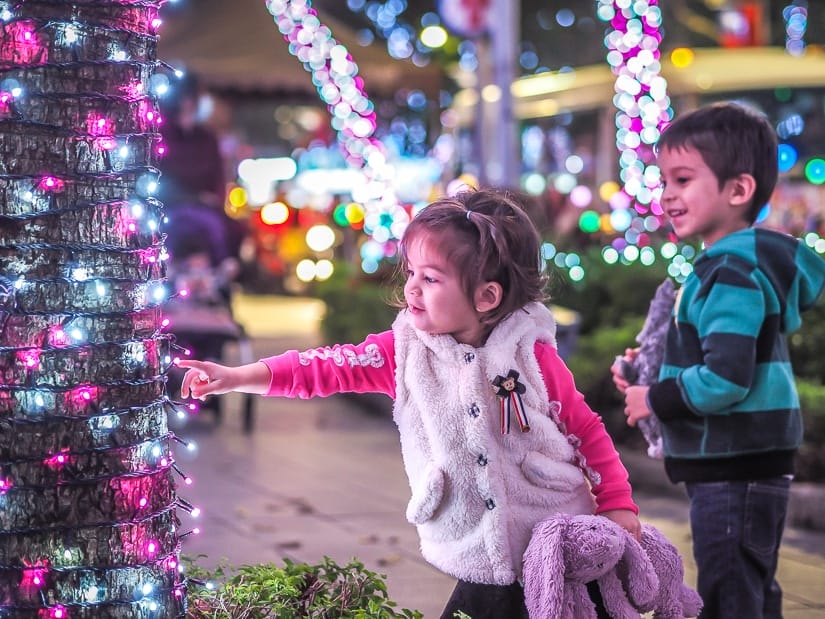
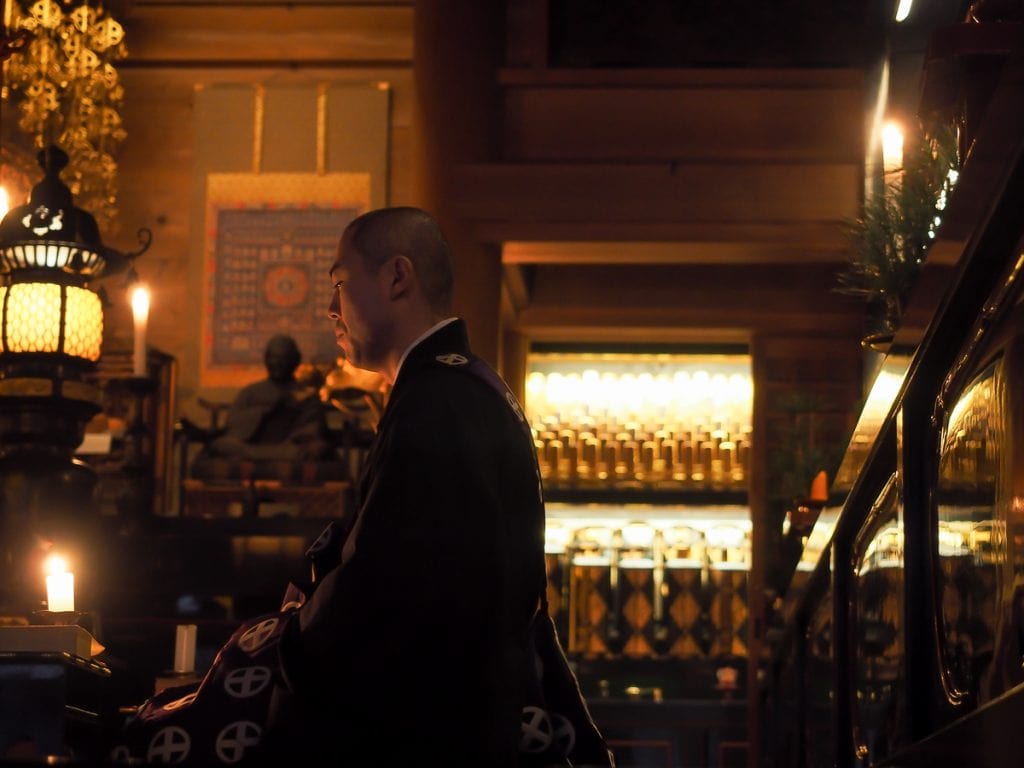


The Bottom Line
While I don’t consider the Olympus 45mm f1.8 to be an essential lens in my kit, it’s extremely useful for low-light situations, and produces some amazing results. It’s so small and cheap that it’s easy to justify adding it to the mix.
My Macro Lens: Olympus 60mm F2.8 Macro

While the above three lenses go with me everywhere I travel, the Olympus 60mm f2.8 Macro Lens serves a totally different purpose. Remember when I said buying Olympus lenses can be addictive? Well, after reading countless reviews for this one, I just had to have it.
What is a macro lens? These are lenses for photographing extremely small things. Think close up shots of bugs, flower filaments, snowflakes, an eyeball, and so on. So this is definitely a niche photography lens, and not necessary whatsoever for general travel photography. I would even call it a hindrance, because once you get into macro photography, you end up forgetting about the rest of the world and spending hours crawling around in the forest trying to capture bugs, and totally ignoring all the other travel stuff you should/could be seeing.
A word of warning, though: macro photography is not easy. The two biggest problems, besides actually finding bugs and other tiny stuff to photograph, are that it’s extremely difficult to focus on things that small (I have to use a rocking back and forth method, as this is a prime (non zoom) lens, and there’s almost never enough light to get a properly exposed shot. The tiny flash unit that came with my Olympus doesn’t work for macro photos (the subject is so close that the lens creates a shadow on it).
To deal with this, I invested in an Olympus external flash, which I set to remote and then hold in one hand while holding my camera in the other. I’ve also experimented with various diffuser reflectors so that the flash isn’t too bright.
My rate of success with these photos is low, and I’m especially not good with working with flash. But when these photos do turn out, they are amazing. What I described above is really a simplified version of how to do it. If you are seriously interested in this lens, I would strongly recommend doing a lot of research first, as I did. There are several different techniques people use with this lens, especially for the flash setup, and none are easy or simple. In other words, mastering the use of this lens takes some real commitment.
I bought this lens when I lived in Taiwan, a subtropical country with tons of crazy bugs and beautiful flowers year-round. I’d recommend it for anyone who is looking for a hobby that involves spending a lot of time in the outdoors, especially if you live somewhere with lots of cool plants and critters. It takes lots of time to get the shots, so don’t bring anyone else along who isn’t taking macro photos too, or they will be waiting forever for you.
Now that I live in Canada, I find that I almost never use this lens, but someday when I’m sure I‘ll get back into it again.
Here’s a detailed review of the Olympus 60mm 2.8 Macro Lens.
Photos Taken with My Olympus 60mm f2.8 Macro Lens

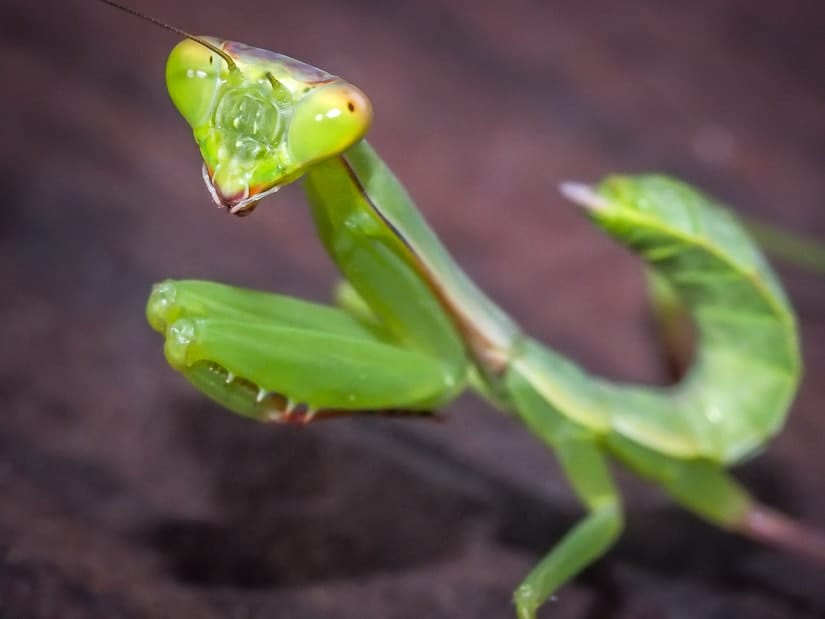

The Bottom Line
I actually wouldn’t recommend the Olympus 60 mm 2.8 macro lens for travel, especially because you’ll likely need to add an external flash, battery charger, and diffusers to your camera bag. This camera is suitable for anyone who’d like to make macro photography a hobby, and a challenging one it can be.
This is a niche pastime that requires lots of research and trial & error to master. You may just love it if you’re into hiking already (and don’t mind it if you never reach your destinations), especially anywhere that has lots of bugs and cool plants.
My Final Recommendations
There are a plethora of amazing cameras on the market these days. For travelers, nothing beats the small size, light weight, and amazing results that can be achieved with a mirrorless camera.
While I haven’t tried any others, I did tons of research before choosing the Olympus Om-d Em-5 Mark II. This camera has been around the world with me, and I’m not surprised at all that it is often featured near the top of lists of the best mirrorless cameras on the market. There’s now a newer model, the Mark III. You can read more about why I love this camera here.
If you decide to get this camera for traveling, then for lenses, I would recommend either of these two options:
1. Get the kit when you buy it on Amazon, which comes with this lens, if you want an all-in-one solution that can minimize camera gear when you travel.
2. For more serious photographers who want their photos to be as professional as possible, buy the camera body only and separately purchase the Olympus 12-40 mm 2.8 Pro Lens. This is an incredible lens that I couldn’t live without, and I shoot 90% of my travel photos with it. I would also recommend getting an Olympus 40-150 mm for a zoom lens (or the Pro version of it, but it’s quite a bit larger and more expensive).
The Olympus 45 mm f1.8 is a cheap and very small addition, but not essential for travelers. It is great for portraits and super low-light situations, helping you to get great photos in some situations that would otherwise be impossible.
The Olympus 60 mm 2.8 macro lens is fun if you want to get into macro photography, but it’s difficult to use and I wouldn’t recommend it for general travel.


